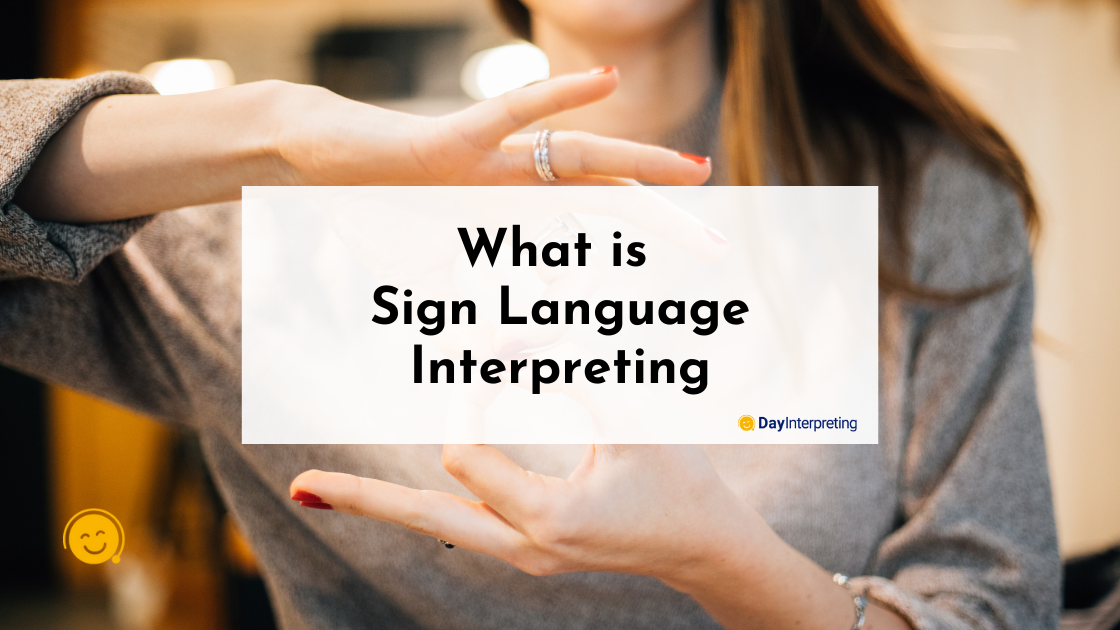Sign language is sometimes the only way to communicate with people from the deaf and hard of hearing communities. And there are more than 70 million deaf people worldwide who use sign language. As the world moves toward inclusivity, it’s important we give equal information access to everyone. But what is sign language interpreting and what does it entail?
In this article, we will explore the importance of sign language interpretation and how it can benefit different people.
What is Sign Language Interpretation?
Sign language interpretation enables the deaf and hard of hearing individuals to communicate with the rest of the world. But there is no universal sign language, and different countries have their own versions.
In some cases, you may come across some countries that share the same sign language. For example, the USA and Canada use American Sign Language (ASL).
When is Sign Language Interpretation Needed?
An interpreter’s main goal is to provide equal access to information to people who are deaf or have impaired hearing abilities.
You will often come across these interpreters in:
- Educational institutions
- Medical and healthcare facilities
- Courtrooms
These services are also required at:
- Commercial and business events
- Important speeches and announcements
- Presidential addresses
Who Can be a Sign Language Interpreter?
Becoming a sign language interpreter isn’t as easy as knowing sign language. Knowing sign language isn’t the only requirement for becoming an interpreter.
An expert interpreter should have:
- In-depth knowledge of the industry (i.e. healthcare, legal, corporate, or education)
- A certain level of experience as an interpreter
- Higher education in sign language interpretation
- Specialized training
Knowing ASL is just a start. An interpreter should also learn advanced techniques like transliteration. But we’ll cover more on techniques later.
Types of Sign Language Interpretation
Depending on the situation, there are different kinds of sign language interpretation that can be requested.
In most cases, they fall under two major categories:
Simultaneous Interpreting
The interpreter listens to the speaker and interprets in sign language at the same time. The interpreter can also observe sign language and convert it into spoken words for the hearing audience.
You’ll often see simultaneous interpreting during conferences or on the news.
Consecutive Interpreting
Consecutive interpretation is more meticulous. It involves the interpreter carefully listening to the speaker and then interpreting it into sign language for the audience. They often take notes before they make a final interpretation in sign language.
You’ll often see consecutive interpreting during business deals and other meetings.
Different Ways Sign Interpreters Communicate
There are different techniques in which a sign language interpreter communicates with their audience.
But the most common methods interpreters use are:
-
ASL interpreting
American Sign Language is the most common sign language interpretation used in the USA and Canada. An interpreter needs to have a full grip on ASL and English to provide this service.
-
Transliteration
The interpreter translates spoken English into a sign language representation of the English language. This kind of translation follows the order of the English word. It may also involve the usage of ASL.
-
Oral Transliteration
Interpreters use gestures to repeat and translate the spoken English language silently. They use pointing and other techniques to render meaning to their silent mouthing and gestures. This technique is unique and is the least popular on this list.
-
Tactile Interpretation
Tactile interpretation involves cues like creating shapes and signs on a person’s hands. This kind of interpretation is for communicating with deaf-blind individuals.
-
Cued Speech Transliteration
This kind of interpretation is used less often. It involves the usage of handshapes positioned in different locations around the mouth area to represent English phonetic markers.
Should You Hire a Professional Sign Language Interpreter?
We live in an age where equal opportunity is becoming increasingly important. To stay relevant and inclusive it’s important that companies and organizations employ sign language interpreters. They need to do this to provide the deaf and hard of hearing community equal access to crucial pieces of information.
Sign language interpretation is a specialized art and must be left to experts. The next time you need to communicate your message to a diverse audience, ensure you hire a professional sign language interpreter.





0 Comments